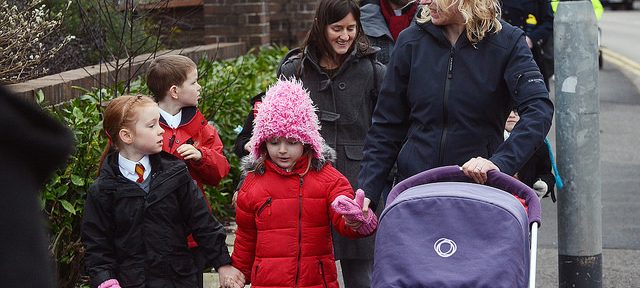“Walking and cycling to school is a great way to get active and tackle London’s toxic air crisis. On this World Car Free Day, and beyond, I would encourage as many Londoners as possible to give up four wheels in favour of going by foot or by bike”
Will Norman
Walking and Cycling Commissioner
Over 100 schools from 18 boroughs will be marking World Car Free Day today by encouraging parents and carers to substitute their car journeys to school with walking or cycling as part of TfL’s sustainable travel to school programme, STARS, to improve air quality in the Capital.
A number of schools across London have set up ‘car-free zones’ near their school gates, while others have ‘park and stride’ spots where parents park a distance from the school gate and walk the rest of the way.
There will also be ‘walking buses’ where children join an organised walk to school, picking up ‘passengers’ on the way as they learn about looking after the environment.
According to the Mayor of London’s research into the health impacts of cars in London, air pollution is a significant health issue with some of the worst pollution hotspots being around schools located on busy and congested roads.
Ambitious
Today’s event follows concerns around the increase in air pollution and congestion on London’s roads. The school run is a major source of traffic and air pollution with school journeys accounting for half the traffic in London between 8:00 and 9:00am during school terms.
The Mayor’s ambitious draft Transport Strategy sets out plans for improving air quality in London by reducing emissions from buses so that all double-deckers operating in the central Ultra Low Emission Zone comply with Euro VI Standard by 2019, ensuring no diesel taxis are granted a first time license in London from 1 January 2018, working to make London’s entire road transport system zero emission by 2050 at the latest and reducing car use on the journey to school.
The Mayor is also launching the toughest emission standard of any city in the world when the T-charge begins on 23rd October. The vast majority of pre-2006 vehicles will need to pay an additional £10 Emissions Surcharge to travel in the central London Congestion Charge zone.
Important first step
This is an important first step to implementing the Ultra Low Emission Zone, which will affect many more vehicles and is expected to reduce NOx emissions by around 50%.
TfL’s STARS programme has been hugely successful in helping primary and secondary school children adopt safe and sustainable ways of travelling, such as cycling, walking and public transport.
Now in its tenth year, the scheme has grown from 180 schools in 2007 to 1,430 in 2017, achieving an average of a 6% decrease in car use.
Just two ten minute walks a day can improve health and wellbeing and reduce the dangers of developing a range of health problems, including Type 2 diabetes, heart disease, some cancers, depression and Alzheimer’s disease.
Great way to get active
Will Norman, Walking and Cycling Commissioner, said: ‘Walking and cycling to school is a great way to get active and tackle London’s toxic air crisis.
‘On this World Car Free Day, and beyond, I would encourage as many Londoners as possible to give up four wheels in favour of going by foot or by bike.’
Leon Daniels, TfL’s Managing Director of Surface Transport, said: ‘Together with the Mayor and working with boroughs we are reducing congestion and improving air quality.
‘It’s great to see our future generations using our STARS programme and World Car Free Day to make the school run green.’
Safer and easier
Tompion Platt, Head of Policy and Communications, Living Streets, said: ‘Making it safer and easier for more families to walk to school is critical to improving air quality around the school gate.
‘Creating safe walking routes, introducing walk to school initiatives and closing school streets to traffic during drop off and pick up times are some of the ways we’re helping schools and parents to ditch the car and choose to walk.’
For further details on the STARS accreditation scheme and the full range of programmes TfL offers to schools and young people, visit tfl.gov.uk/stars or tfl.gov.uk/younglondon.








